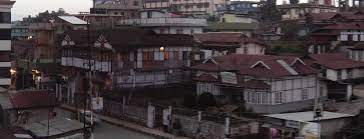Preservation of ‘Assam Type’ houses, need of the hour: Experts

- Country:
- India
Amid the concrete structures mushrooming all over this northeastern state, some areas are still dotted with historically and aesthetically beautiful buildings known as ‘Assam Type’ houses, which heritage lovers and experts assert require preservation and restoration. Sloping roofs, louvres, gables, awnings, skylights, bay windows and a porch are some of the features that make them distinctive, along with their sustainability and resilience to withstand earthquakes, experts point out.
“Architecturally, a typical Assam Type house has features which are aesthetically soothing and at the same time sturdy enough to withstand the vagaries of nature”, former chief secretary of the state, Jishnu Barua, said.
This type of architecture is a style developed during the late 19th century and is primarily found in Assam and other Northeastern states along with Sylhet in Bangladesh, Barua, who has a keen interest in the heritage and preservation of these structures, said.
“These fascinating houses are disappearing fast with the onslaught of concrete structures changing the architectural landscape of the state, and there is an urgent need to document, preserve and, where necessary, restore the buildings”, heritage activist Nandinee Kalita told PTI.
Upkeep of the structures is necessary for which considerable effort, time, skill and finance are required, Kalita said. “We have attempted to document the history of these houses, its architectural significance, cultural tradition and sociological evolution in a coffee-table book titled ‘Aaakriti’ which covers a wide spectrum of over 100 houses across the state, ranging from simple family homes to opulent bungalows, government residences and public institutions’’, she said.
Some of these houses are almost 150 to 200 years old and have gone through extraordinary journeys which “we attempted to highlight through literary and photographic accounts”, she said. It was the 1897 earthquake of 8.1 magnitude that struck the Shillong plateau, causing considerable damage to the houses, that led the British government to set up an expert committee for the construction of buildings suited to the region, engineer Ochintya Sarma, involved in documenting the buildings, said.
British engineers and experts studied the environment and locally available building materials and suggested a construction system more suited to withstand the vagaries of nature, he said.
The architectural intervention suggested steep roofs, walls constructed of ‘ikora’ (elephant grass), vertical and lateral timber frames, high ceilings, and finishing of mud and whitewash.
“Strength and insulation from the impact of seasonal changes were the key consideration with local sources mostly used as building materials but zamindars, aristocrats, tea planters, professionals like doctors and lawyers sourced materials from as far as England, Poland, Belgium and Ireland”, he pointed out.
Teak wood for the pillars, doors, windows and ventilators were brought from Burma and Naga Hills and when the devastating earthquake of 1950 struck the state, the houses were able to stay standing, validating the resilience of its distinctive construction style, Sarma added.
The Managing Director of Topcem Cements, Bajrang Lohia, pointed out that being in the construction business “we know that the technique behind the construction of these houses are environmentally sustainable, evolving over the years to adapt to the terrain, climate and availability of raw materials in the region”.
Times have, however, changed and with pressure on land, many of these structures have given way to concrete structures though there are some who still hold on to their heritage with pride.
For 86-year-old Hironmoyee Goswami, her Assam-type abode is an oasis of peace and “though there has been pressure from many family members that we build a three-storied concrete house as these type of houses are difficult to maintain. I refuse to give in and will spend the last few years of my life in my sprawling home”. In recent years, due to renewed awareness and public goodwill, many such dilapidated buildings have been restored by experts, a government official pointed out.
Some of the iconic buildings restored are Jorhat’s Assam Sahitya Sabha office, Dibrugarh’s Berry White Medical College, Guwahati’s Cotton University, Christ Church and the former bungalow of the Kamrup Deputy Commissioner (renamed as the Brahmaputra Heritage Centre), he added.
(This story has not been edited by Devdiscourse staff and is auto-generated from a syndicated feed.)
ALSO READ
Saab's Strategic Move: Parallel Production of A-26 Submarines for Poland
From Justice Minister to Asylum Seeker: Ziobro's Battle with Poland
Goa Welcomes First Charter Flight from Poland's Katowice
Poland's Candid Concerns Over Trump's Greenland Statements
Poland Triumphs Over Australia in United Cup Thriller










